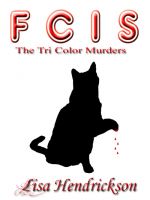The dictionary says a vignette is “a brief evocative description, account, or episode,” or “a small illustration or portrait photograph which fades into its background without a definite border.” The first definition is the one that concerns us here. Vignettes can be an effective way to practice your writing. In this sense, it is a description of characters, actions, and places. I often write vignettes in my journal. They are practice for me.
You can use the form to focus on areas of your writing when you think you need to bolster them. You don’t need to add any action to the vignette, just sit down and describe the few out your window. Describe a park. Describe a person. You could describe a sporting event or children playing. It doesn’t matter. The key is to describe the place, person, or event.
It could be a scene. It’s part of a story that tells its own story. Some people call it flash fiction. You don’t quite get a story from a vignette unless you get something longer than a single scene. It is to the story, what a sketch is to a painting. It’s a bare bones scene. So, if you are stuck in process of writing, try writing the story, or scene, as a vignette and see if it works. If it does, incorporate the narrative into it and move on with your story.
The vignette is a valuable tool for learning the craft of writing. As with most tools, it will work well for one person and not so much for another. You won’t know which category is the one you belong in until you try. Just remember that you don’t need minute details. Just enough description to set the stage and add your action. Or, if you use it as a study of the place, describe the setting in broad strokes. I do that when I am creating a story. I use the vignettes of the locations for the action to create the backdrop for the action. I add in details where it’s needed. I do the broad strokes description before I write the story and incorporate the broad strokes and color them in during the writing process. It works for me. It’s like the idea of using photographs of places to make your story richer and more rooted in the real world. The vignette is the photograph.
It also works when you are describing your characters. Do a verbal sketch before you begin the action where you put your character to the test. It will help you to stay accurate in describing what your character is doing, adding the little touches like, “she brushed her brown hair out of her face” as you work to bring the character alive. After all, if she is blond in one scene and dark in another, you can, will, and should be, called out on consistency. The vignette can help keep your descriptions consistent. You’ll be glad to have them when you write your story.

 Check out my novel, The Accidental Colony — It's the story of a group of scientists fighting for survival.
Check out my novel, The Accidental Colony — It's the story of a group of scientists fighting for survival. FCIS: The Tricolor Killer is now available on Smashwords
FCIS: The Tricolor Killer is now available on Smashwords
Leave a comment